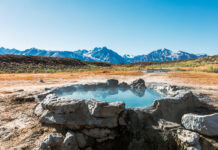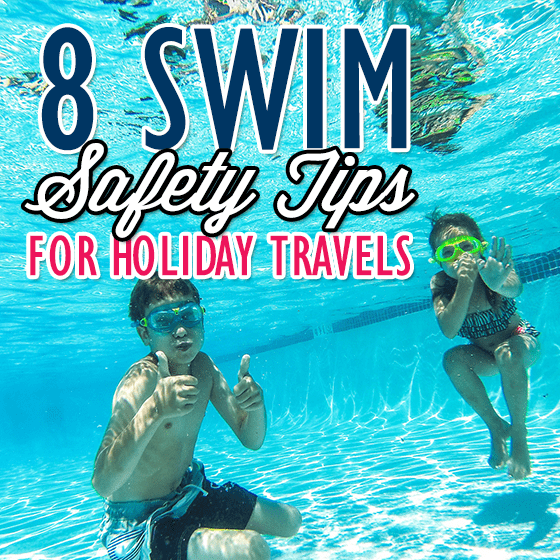With the holidays quickly approaching, you may be preparing for a winter vacation or trip to visit family and friends. Chances are that in all the hustle and bustle of year end, you’re not thinking about water safety, but if you’re going to be near a pool, you should be.
Whether traveling to warmer climates to visit grandparents with pools, plans to stay at beach resorts, or traveling to colder temperatures with frozen ponds and snow covered rivers, water safety is key to an accident-free, fun family vacation this holiday season. From the United States Swim School Association (USSSA), the largest and preeminent swim school association in the country, here are 8 tips for water safety for your upcoming holiday vacation.
Children’s swimming skills need practice, yet for most families, the last time the kids were in the pool was during the summer. Unfortunately, children with rusty swimming skills are at higher risk for getting into a situation where drowning is possible. According to the Centers for Disease Control and Prevention (CDC) about 10 people die every day from unintentional drowning in the United States. Of these deaths, two are children aged 14 or younger.
Additionally, for every child who dies from drowning, another five receive emergency room care for nonfatal water-related injuries which can cause severe brain damage resulting in long-term disabilities. Water safety is a must, and allowing an unskilled or unsupervised child near a body of water, even so much as being left alone in the bathtub, is a very serious safety concern for all parents.
Table of Contents
Water Safety For Kids
1. Create a verbal cue that must be given by an adult before any kids can enter the pool.
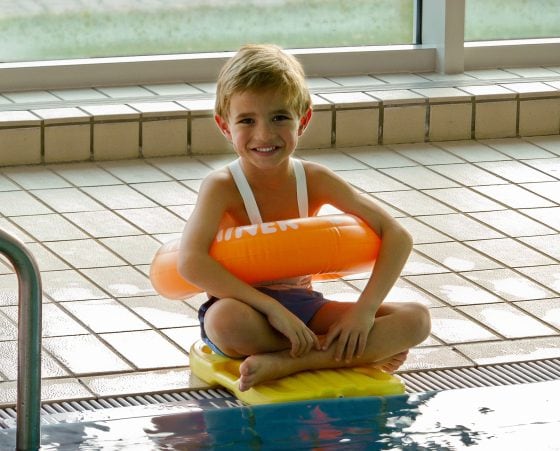
Any child old enough to be swimming without an adult in the pool with them is old enough to understand that he needs to await grown-up approval to enter the water. This needs to be verbal approval though, not the child simply thinking a parent or adult is watching.
Have a conversation before arriving at your vacation destination with your child/children and come up with what you will say that will grant them permission to enter into the water. Make sure the verbal cue is age appropriate and able to be clearly understood by your child. Don’t make the cue too long and don’t use common phrasing to ensure that there is no confusion by the kids when other conversations are taking place and no one is really watching the water. For example: “You may get into the pool now” or ” Let’s go swimming.”
As parents we know our children often think we are watching them do something when really we are not as we may be distracted by something else going on around us and multi-tasking. Add a body of water into the mix and this can be a deadly scenario.
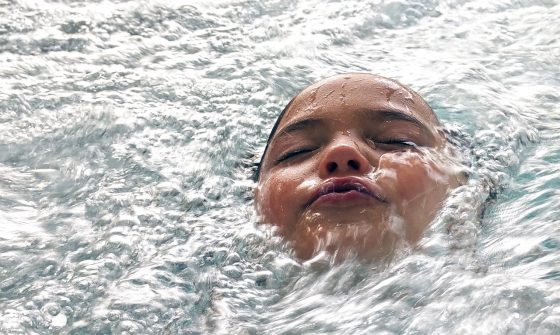
Holidays with extended family are the perfect example of being distracted, because as adults we tend to get caught up in conversation, meal preparations, and more. We’re all guilty of responding to our children’s questions or prompts with a nod or an “okay” while not really listening to what they are telling/asking us. Your child at that point likely believes he or she has received permission when really no one is watching them enter the water.
Explain to your child beforehand that if they ask the question “Can I go swimming?” and all you say is “uh-huh” that you are not really paying attention and he or she should ask again awaiting the verbal cue ensuring you are granting them your undivided attention.
2. Create a set of pool rules before kids are allowed into the water, that all adults will enforce.
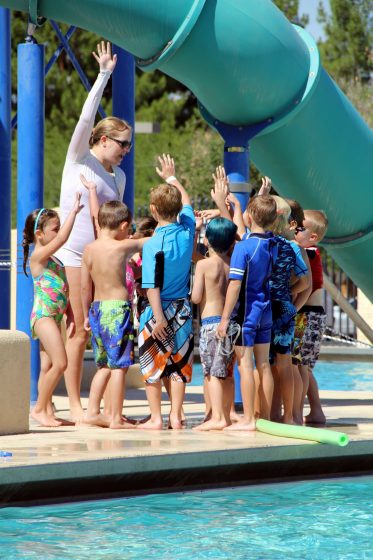
Getting together with family and friends is the cornerstone of the holiday season. Sharing meals, trips, homes, and camaraderie is what most of us look forward to during this time, but when large groups gather there are always different aged children, different rules, and different parenting styles. In order to ensure the safety of all children, the adults in your group need to create an agreed upon set of rules before any of the kids are allowed in the pool, lake, or ocean – that everyone can enforce. In large part this is because there are bound to be differing levels of swimming abilities amongst the children, and because when large groups of children get into a pool, even the strongest swimmer can be at risk when others are playing rowdy nearby.
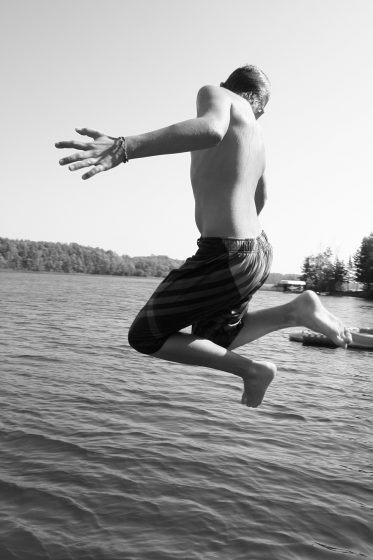
Also consider how some of your rules at home may impact others while traveling. For example, while some parents may allow their tweens to enter the pool without adult supervision at home, when on vacation with younger cousins this cannot be permitted because the younger children will follow the older into a dangerous situation. Adults should discuss the rules that will apply during their time together, then explain those rules to the children of all ages so that there is an understanding of when, where, and under what conditions water play will be allowed.
3. Select a parent to be the designated water watcher.
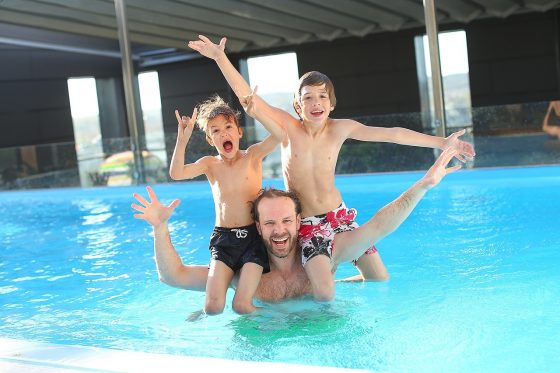
Pool parties are fun, however, having adults hanging out near the pool does NOT necessarily mean anyone is watching the children. Adults are engaged in conversation and the big kids are diving into the deep end, but where is little Johnny who may not be as strong a swimmer as his older cousins? Tragedy strikes in this scenario all too often while adults are literally right next to the pool.
The problem is that with multiple bodies in the water at one time it is easy for a small child or weak swimmer to slip right under the water, get confused as to their surroundings, and fail to surface. When children are swimming in the pool, lake, or ocean there needs to be a designated water watcher at all times. Either before getting to the water, or upon arrival, make a plan of who will switch on/off as the water watchers and when.
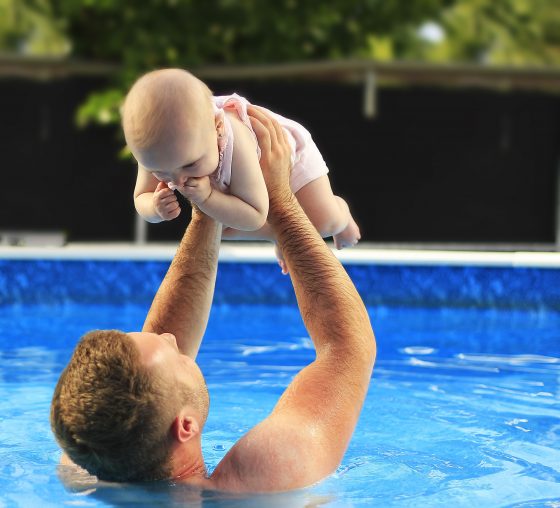
Make sure those individuals are NOT consuming alcohol before or during their shift. While acting as the water watcher, the designated parent needs to make sure to keep their eyes and ears open and in tune to the activity of the kids in the water, not the conversations taking place around them. The CDC states that drowning happens “quickly and quietly” and therefore warns against playing games, reading books, or talking on the phone while watching children in a pool, in addition to forbidding alcohol and drug use. Taking scheduled turns with all the parents near the water allows everyone a chance to enjoy the pool or beach party while still ensuring the safety of all the kids involved.
4. Take time to familiarize your children with the pool.
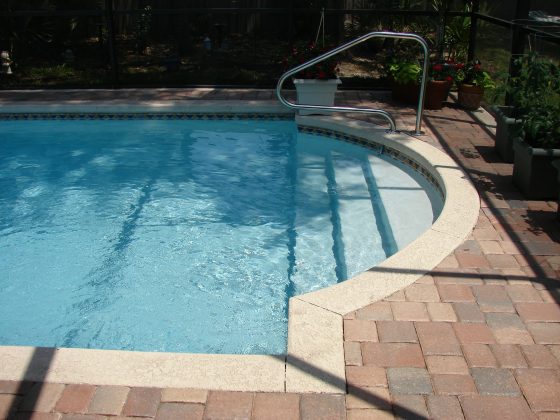
Children in distress can get easily confused about their surroundings. This leads to panic which can be life-threatening in a pool or other body of water. Therefore, parents need to make sure to familiarize their children with the pool they will be swimming in or staying around (i.e. where the shallow and deep ends are, where stairs to get in and out are located, where they can and cannot swim) before allowing the child to simply jump in.
Make sure your child knows where he or she is allowed to swim based on the child’s swimming abilities, depth, and exit location. Pools come in various shapes and sizes and children who may be used to a beach pool with a sloping shallow end may be surprised when they step into a 3 foot shallow end immediately.
Many pools these days are designed to be aesthetically pleasing and thus have hidden stairs, no railings, and high sides making it difficult for a child who falls in to save him or herself easily.
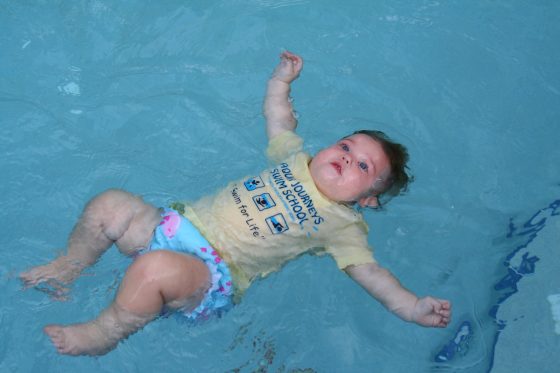
Unfortunately one of the most dangerous scenarios is where a young child leans over the edge of a pool to grab a toy and falls head over heels into the water. Oftentimes the child is then unable to get themselves out of the pool because the sides are too high/water level is too low. This is why teaching a child to float is so important.
Floating allows the child to continue to breathe while unable to get him or herself out of the water and allows the child time to float closer to an available set of stairs or a side he or she can reach.
5. Do not rely on lifeguards to constantly monitor your children.
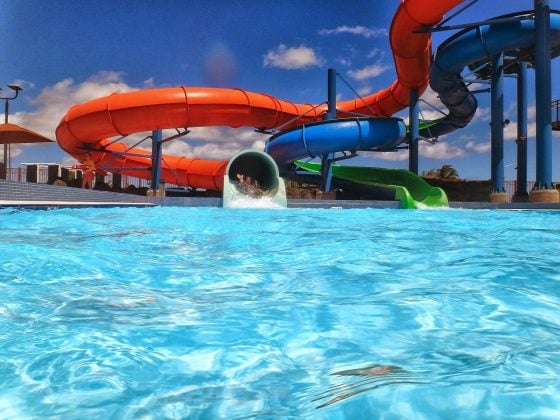
As a parent you know how difficult it is to keep track of your own child one-on-one at a crowded playground or swimming pool, so NEVER rely on a lifeguard at a crowded hotel pool, beach, or waterpark to be responsible for your child’s safety. Although trained and likely good at their jobs, lifeguards are often young adults or teenagers tasked with overseeing pools, lakes, or oceans crowded with people. You cannot be sure how experienced a lifeguard is and should never assume. It might take a new guard time to notice an unsafe situation in a crowded pool and you need to be ready to react first if your child needs help.
Even the strongest of swimmers can get into trouble in a crowded or rambunctious swimming situation. You must always be on alert while your children are in the water.
Indoor waterparks can be dangerous because they often have tide pools, varying depths, and other water related obstacles that your child may not be ready for or accustomed to. Your child may be a great swimmer, but when the water and waves start rising in a tide pool he or she may very quickly find themselves in over their heads, surrounded by strangers with no one realizing he or she is overwhelmed and in a dangerous position.
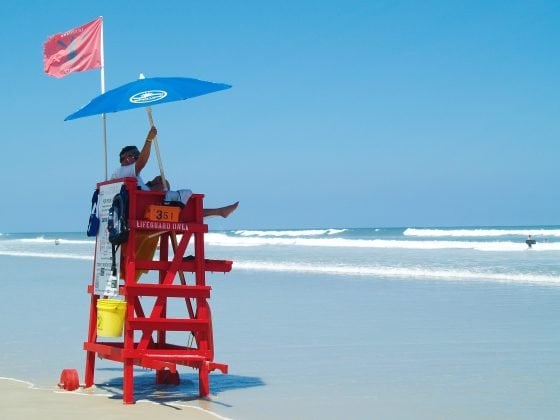
Similarly, at the beach or ocean beware of the variation in the tides and rip currents which can pull a child under in seconds.
6. Do not use water wings or pool floats as a substitution for supervision if your child is not a strong swimmer.

The CDC recommends that all children who are not strong swimmers wear life jackets when in or near water at pools, beaches, or lakes. Air-filled or foam devices such as pool floats, water wings, or noodles should NEVER be used as a safety precaution because they are not intended to be nor are they a life-saving flotation device.
Many swim schools disagree with the use of water wings or pool floats for young children at all because unfortunately these items give a false sense of security to the child and parents and teach the child incorrect swimming and floating posture. Children begin to think they can swim while wearing their water wings and venture into deeper water and more risky situations. Parents see their child “swimming” and look away or become distracted by something thinking their child is safe. This can be disastrous.
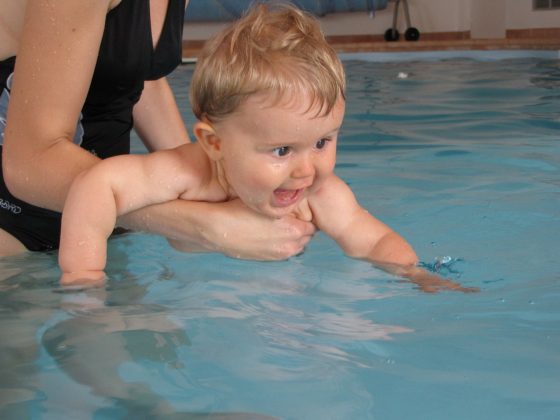
When wearing water wings a child is swimming through the water vertically. Without the water wings that position will not allow a child to do anything more than tread water which will cause them to tire quickly and can be dangerous. Swimming and floating both need to be accomplished horizontally, so swim lessons for children from a young age are highly recommended, although there is still no substitute for adequate supervision.
7. Cold weather destinations are not a guarantee of safety.
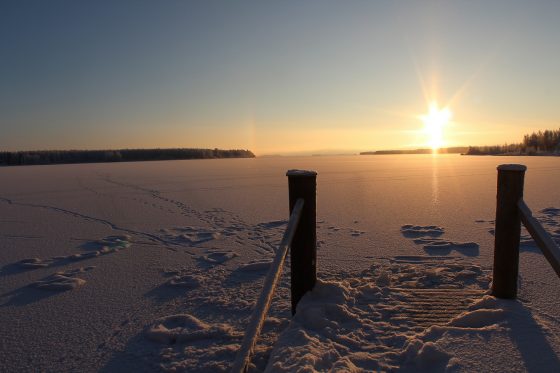
Traveling to cold climates for skiing, snowboarding, and ice skating are favorites among many families during the holiday season. However, just because you are headed to a cold weather destination does not mean there are not water precautions to be taken.
Children still need to be watched around water that appears frozen, and should not be allowed to walk on frozen ponds, lakes, creeks, or other bodies of water that could easily crack and trap a child under the ice.
Children from warm climates will be enthralled with frozen lakes or ponds and rivers covered with snow, but this is all the more reason to have a serious safety discussion with your children before arrival. Just because you can ice skate on the local frozen pond in the center of your vacation town does not mean the lake in the backyard of the vacation rental is just as safe.
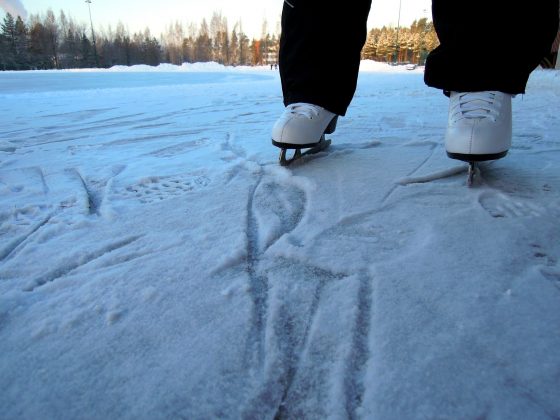
Bodies of water covered with snow can be even more misleading to young children not accustomed to this environment because they do not realize that the snow may be resting on top of moving water that is not frozen at all.
Make sure to have this safety talk with children of all ages, especially teenagers who may roam around unsupervised in the snow, have a heavier body weight, and not even realize at times they are near water because of the unfamiliar surroundings.
8. Secure Home Pool Before Going Away.
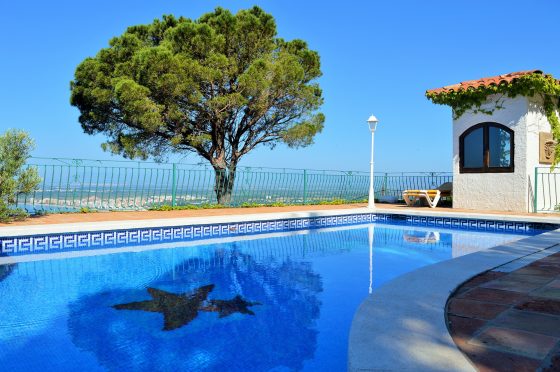
Although you are leaving for vacation you still have the obligation of being a responsible homeowner. The CDC recommends that all backyard pools are surrounded on all sides by a fence or enclosure that is at least 4 feet high with a self-closing, self-latching gate. Gates should open outward and the latch or lock needs to be out of reach of children.
If using a pool cover make sure it is adequately secured so that no animals or children could fall onto the cover and cause it to collapse into the water and become trapped in or under the cover in the water. Before you leave, make sure to clear the pool deck of all balls, floats, and toys so no children are enticed to enter the pool area unsupervised.
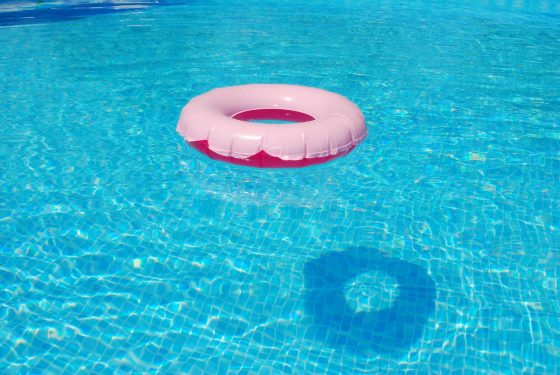
Swimming is not only a summertime activity, so before you travel to a warm weather destination you may want to check local, indoor swim schools for winter refresher lessons for the kids. Basic survival skills such as floating and breath control are necessary in all climates and should be a key part of your childs swim education.
Children as young as 6 months old can learn to float and breathe if an accident were to happen and the child were to fall into a body of water.
The USSSA has over 400 members in swim schools throughout the country, providing instruction to over 500,000 students each year. Parents are provided with a reliable and trustworthy resource when searching for a swim school through USSSA and can take comfort in the knowledge their child will be receiving an excellent and potentially life-saving water safety education.
Photo Credit: Ed Ivanushkin, Pixabay, Kim Lambert








